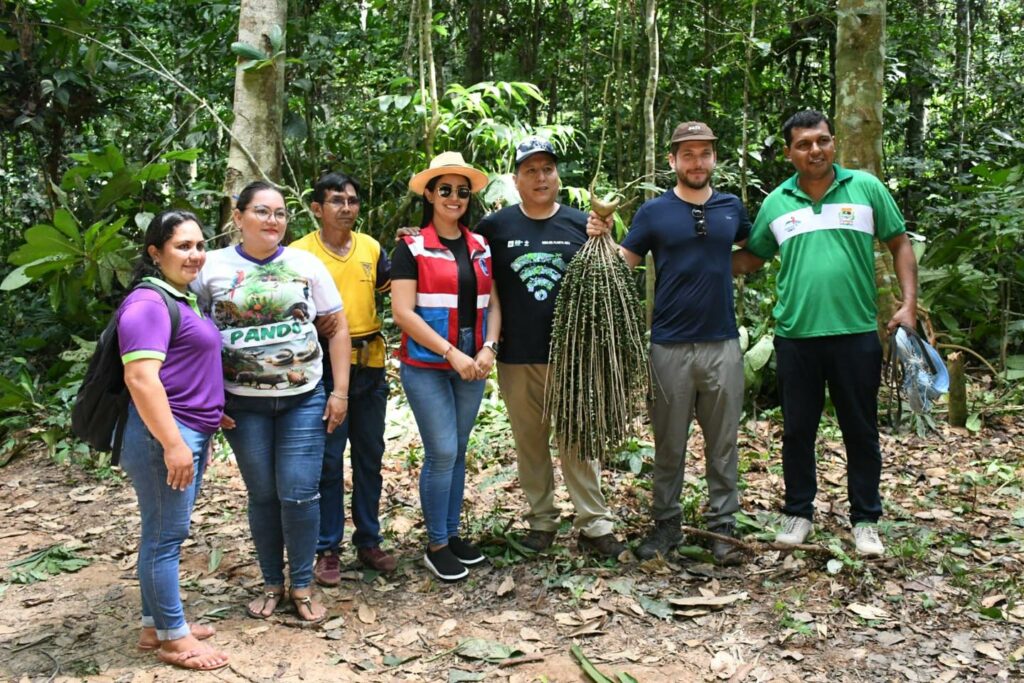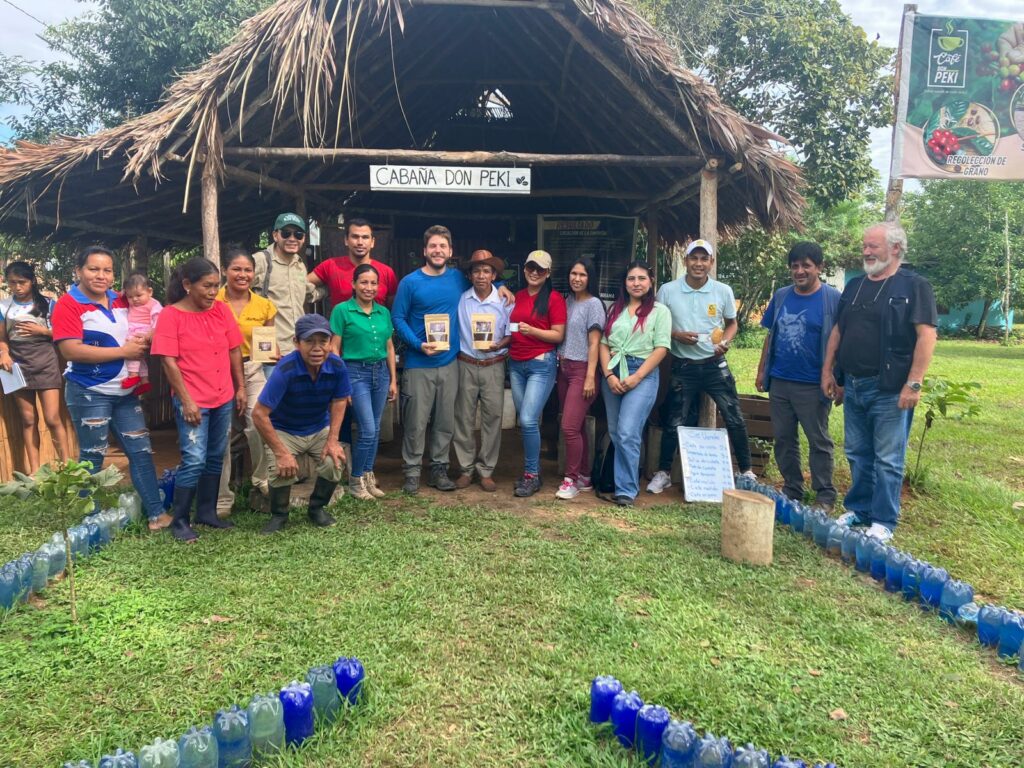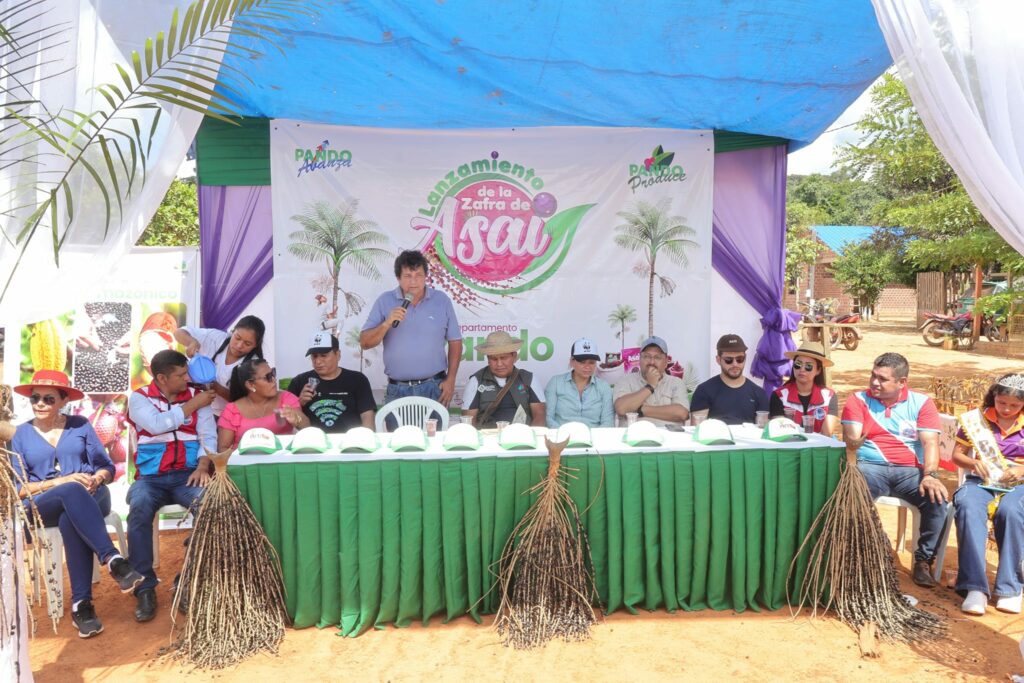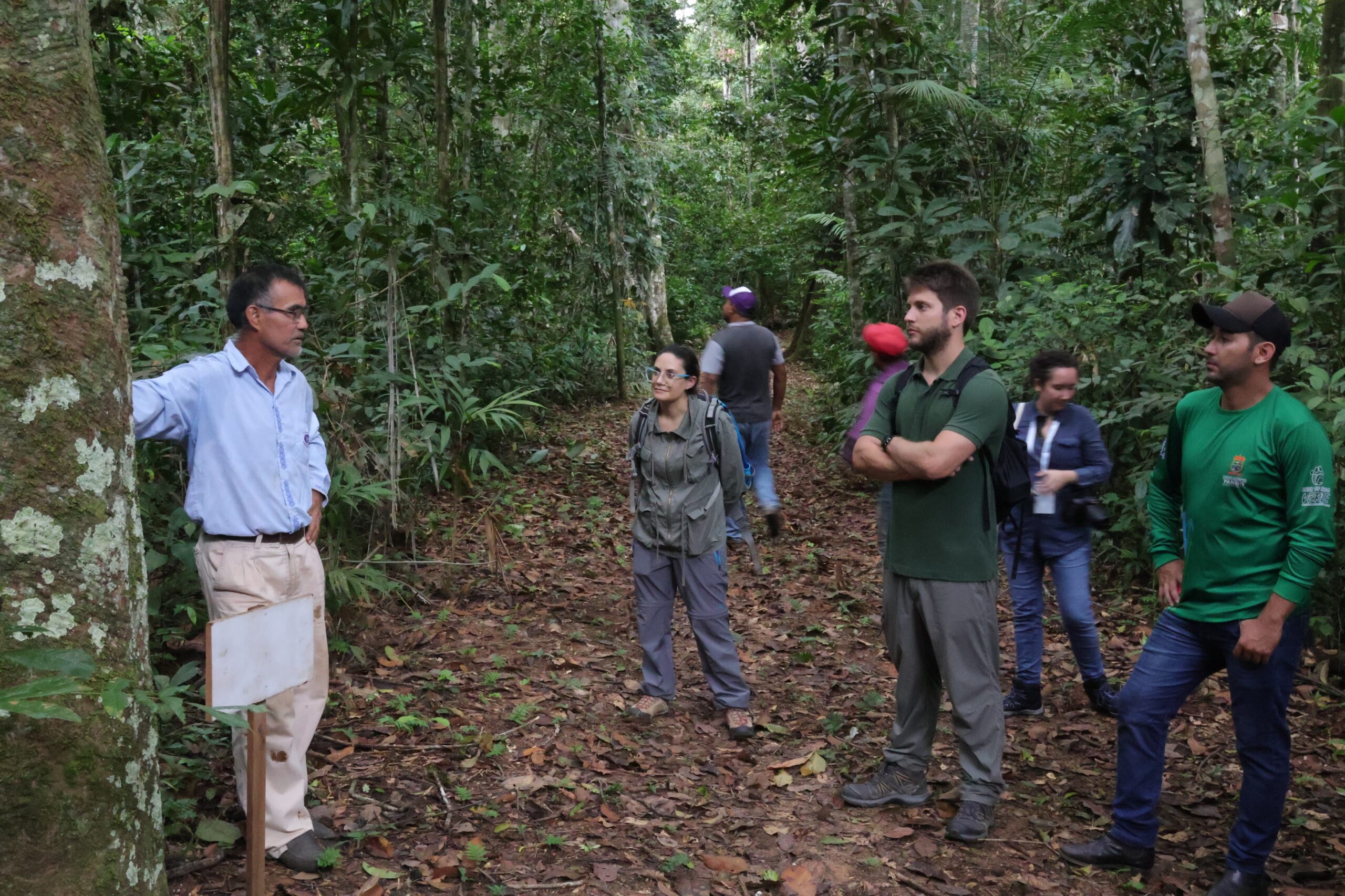In the green tapestry of Pando, Bolivia, where the dense canopy of the Amazon rainforest stretches as far as the eye can see, the GCF Task Force Secretariat member Gabriel Penteado arrived on a mission to witness and document the efforts being made to adapt to and mitigate the impacts of climate change. Invited by Governor Regis Richter, with support from the Departamiento de Madre Tierra and delegates Homali Flores Bautista and Federico Aguilar, this visit was timed to coincide with Earth Day, emphasizing the global importance of their mission.
Pando is unique; it’s the only Bolivian department entirely encapsulated within the Amazon, maintaining over 90% forest cover. However, recent extreme weather events, including a severe drought in October followed by catastrophic floods in early March, starkly illustrate the immediate effects of climate change in this area. The government of Pando declared natural disaster zone during the event that overcame historical records of water levels, reaching over 17 meters high and compromising three schools, one health center, and most streets and avenues across seventeen neighborhoods. Over four thousand were affected by the flood. These events have not only disrupted life but also underscored the urgency of sustainable environmental management.

Flood in Cobija. Photo by Department of Pando
The New Forest Economy
The visit was framed around the “New Forest Economy,” a sustainable development model suitable for tropical regions that the Governors of the GCF Task Force unanimously agreed during the Annual Meeting in Manaus, in 2022: the Manaus Action Plan. The team visited several communities where this new economy was not just a concept, but a living reality:
In Trinchera
The community of Trinchera, in the Porvenir municipality that neighbors the Department capital of Cobija, is pioneering in its approach to local natural resources. There, Dom Manuel and his family are leaders in the sustainable harvesting of castaña (Amazon nuts) and assaí. Their operations, which include a Fair Trade certified castaña enterprise and a local assaí processing facility, symbolize a move towards better standards of living while maintaining culturally relevant activities as the traditional castaña and assaí harvesting. However, the community faces challenges such as unreliable electricity and poor road access, highlighting the infrastructural gaps that need bridging to sustain and expand such initiatives.

Assaí harvest with community leaders Mizael and Livia, and local authority Liz Richter. Photo by ACEAA.
In Santa Fé
Further into the heart of Pando, the Santa Fé community, led by Dom Pike and his family, is demonstrating how agroforestry can effectively merge conservation with economic activity. By integrating agroforestry practices as a buffer between pasturelands and conservation areas, they are not only protecting the forest but also enhancing community livelihoods through diversified income streams, including ecotourism. This model presents a compelling case for formalizing such initiatives, which can provide a blueprint for similar environments globally, and they are now stablishing a new agroforestry coffee route to explore even more the land production and natural beauties.

Coffee route in Comunidad Santa Fé. Photo by FAUTAPO
At Villa Florida
The cases presented in previous communities come to life in a big celebration in the Villa Florida – the “Lanzamiento de Safra”, or the start of the new assaí harvest. Villa Florida is inside the Manuripi Reserve, which makes the potential of sustainable assaí extraction possible due to the massive amount of assaí palms that only the locals can find and harvest among the dense forest. This event, now in its third iteration, represents the modernization of traditional extractive industries into more profitable practices, that are reverted to the community. The celebration of the assaí harvest showcases how traditional knowledge and modern techniques can amalgamate to forge a viable economic pathway that does not compromise the ecological integrity of the Amazon.

Photo by the Department of Pando
Looking to the Future
As the journey through Pando concluded, the narrative shifted towards the upcoming GCF technical meeting in Santa Cruz, Bolivia. This meeting promises to be a pivotal moment for Pando, Tarija and Santa Cruz, our hosts, and the whole GCF network, as it will focus on the financial mechanisms that can support and expand the reach of the New Forest Economy.
This expedition into Pando has reaffirmed the paths communities can take to adapt to a changing climate while striving for economic stability. The lessons learned there, amid the biodiversity and resilience of the Amazon, will undoubtedly contribute to broader discussions on sustainable development and environmental conservation. As the world continues to seek balance between development and conservation, Pando stands as both a symbol of hope and a call to action.

